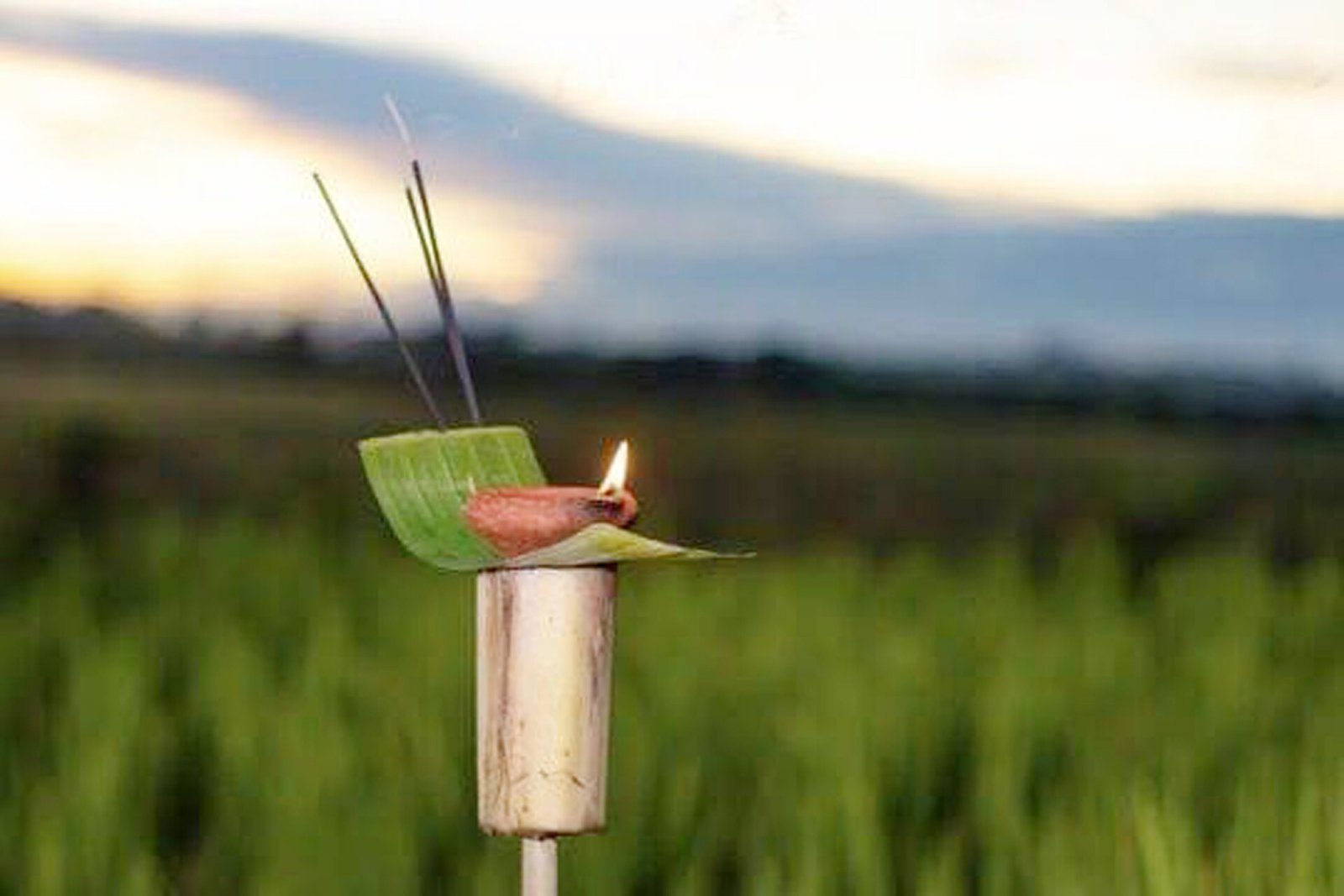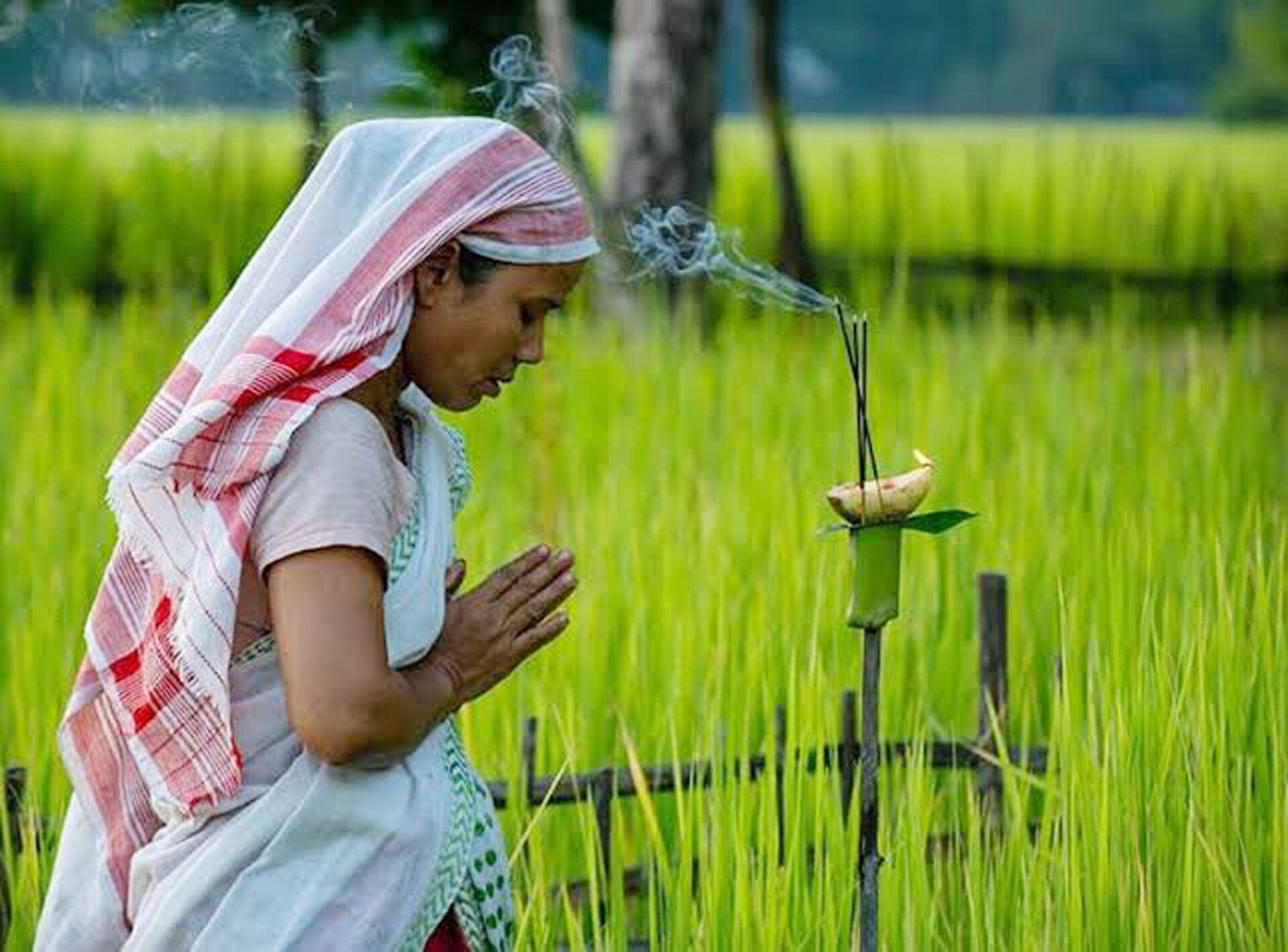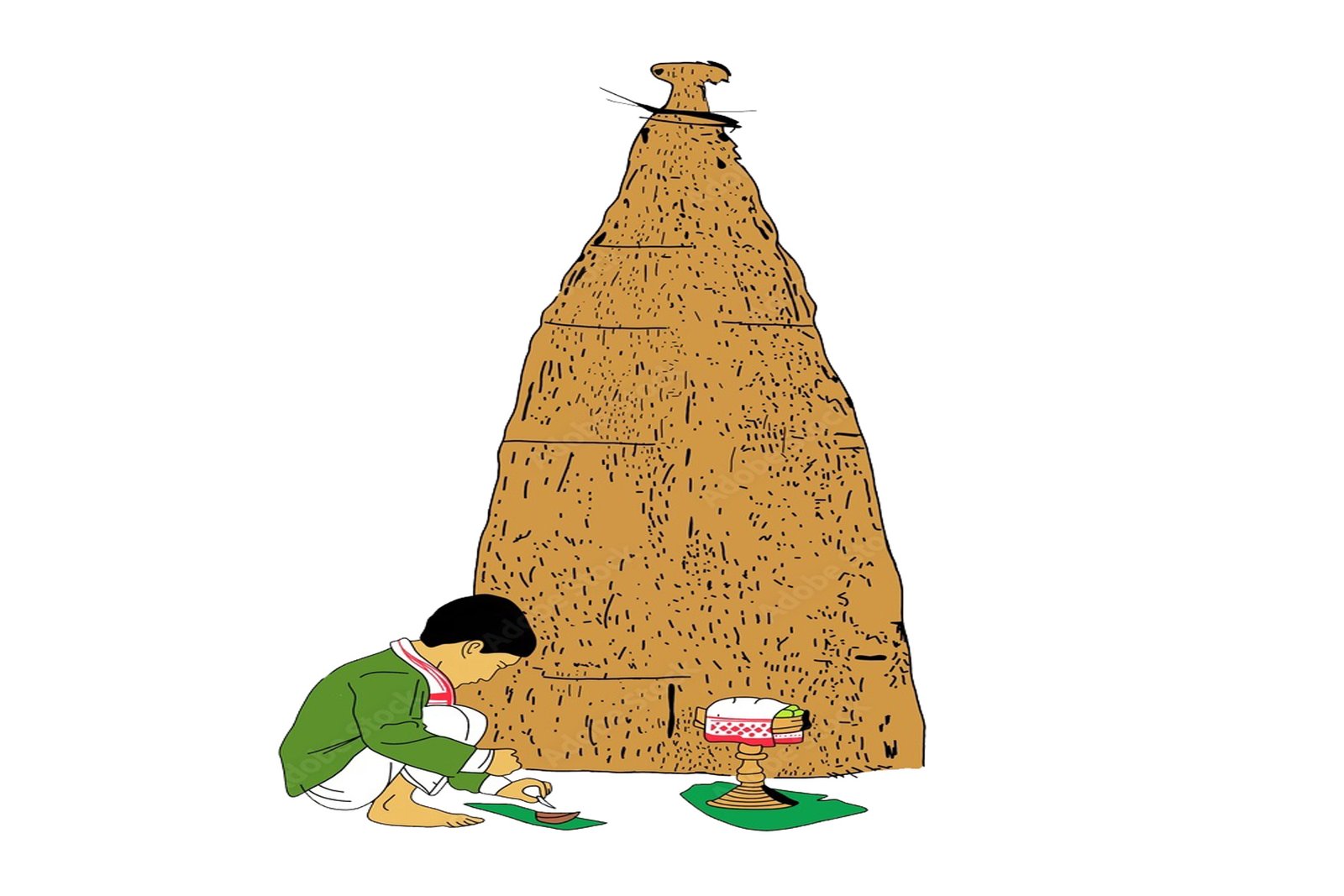By: Dipak Kurmi
In the heart of Assam, as the calendar turns to mid-October, a hushed reverence descends upon the land – the sacred occasion of Kati Bihu unfolds. Known as Kongali Bihu for its solemn atmosphere, this festival holds a unique place among the Assamese people, marking the beginning of the sowing season and the anticipation of a bountiful harvest.
On the first day of the ‘Kati’ month, Assamese households come alive with age-old customs. The Tulsi plant, a symbol of purity, takes center stage on an earthen platform called “Tulsi Bheti.” Families gather to offer prayers and make offerings, seeking the blessings of the goddess Tulsi for the welfare of the family and a prosperous harvest. This ritual extends throughout the month of Kati.
Lights, in the form of saaki or candles, illuminate various corners of homes, casting a warm glow to commemorate Kati Bihu. The main lamp, lit in the courtyard near the revered Tulsi plant, symbolizes the enduring flame of hope and the power of manifestation.
Farmers contribute to the festivities by lighting ‘Akaxh Banti’ – special lamps on tall bamboo poles placed in the paddy fields. While these lamps serve a practical purpose in attracting insects that could harm crops, there is a deeper belief that they guide ancestors to heaven.
The Essence of Kati Bihu: Kati Bihu, one of the three significant festivals for the Assamese people, holds a distinct place alongside Bhogali Bihu and Rongali Bihu. The festival not only celebrates the agricultural cycle but also serves as a reminder of our dependence on nature for sustenance.
Cultural Highlights: Lighting the Clay Lamp: Traditional Assamese clay lamps play a pivotal role in the celebrations, symbolizing the enduring flame of hope. Placed on the Tulsi plant, these lamps are lit throughout the month, signifying prayers for a fruitful crop and family health.
Bihu Dance: Kati Bihu is incomplete without the vibrant Bihu dance, a traditional Assamese dance that reflects the spirit of community solidarity. Learning a few steps adds to the festive experience.
Saying Grace: Before partaking in the festive meal, a prayer is said, expressing gratitude to the land and the farmers. It is a moment to appreciate the significance of the harvest season.
Meat Feast: The culinary delights of Kati Bihu include the northern Assamese preference for duck meat and, in southern towns, the enjoyment of pigeon meat on gloomy days.
Gamosa Gift: Assamese hospitality shines as visitors receive ‘gamosa,’ hand-made towels, symbolizing the warmth of community and connection.
Nature’s Ode: Kati Bihu serves as a perfect ode to the natural laws that provide us with sustenance. It celebrates the fall season, marking the time to plant seeds and begin the harvest cycle, culminating in the reaping of fruits in April.
Gratitude Amid Scarcity: The festival reminds us to be grateful for the abundance we often take for granted. During times of scarcity and crop shortages, we recognize the importance of our basic needs and express gratitude for the anticipation of future crops.
Rooted in Tradition: Kati Bihu is a solemn celebration that connects us to our roots and our dependence on the earth for food. As families come together, it creates a bridge to ancestors, symbolized by the journey from the fields to home.
In essence, Kati Bihu is not just a festival; it is a spiritual journey that honors nature, fosters gratitude, and strengthens the ties that bind the Assamese people to their cultural heritage. As the lights flicker and the Bihu dance echoes, Kati Bihu weaves a tapestry of tradition, spirituality, and communal harmony in the vibrant land of Assam. (The writer can be reached at dipaknewslive@gmail.com)







